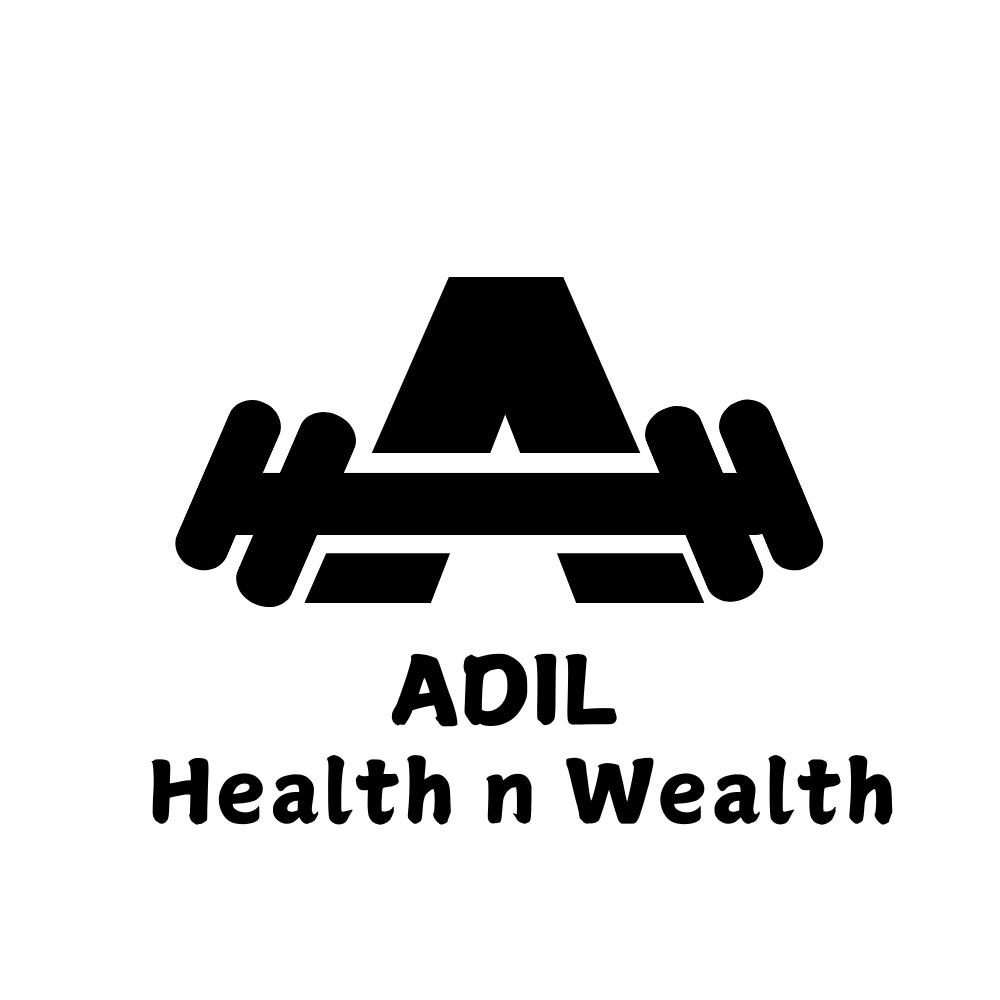Disclaimer: This post may contain affiliate links, meaning I get a commission if you decide to make a purchase through my links, at no cost to you.
The dream of earning money while you sleep, travel, or focus on other passions is definitely alive and up and running in 2025. This is the essence of passive income–creating streams of revenue that require minimal ongoing effort to maintain after an initial investment of time, money, or both.
However, let’s be clear: “passive” rarely means “zero effort.” Most passive income strategies require significant upfront work to build the income-generating asset or system you usually see online by other bloggers. Think of it as planting a tree—you invest time and effort initially, but once it’s grown, it bears fruit for years with just basic care.
So why focus on passive income in 2025?
As it is one of the most sought-after ways of achieving financial freedom, becoming independent, and because of a significant rise in the digital economy, a growing desire for financial independence and flexibility, makes it more relevant than ever. Whether you want to supplement your primary income, build long-term wealth, achieve financial freedom, or want all of the above, exploring passive income is a smart move.
Here are 21 passive income ideas with an explanation on each idea to help you understand better and easier that are proving effective in 2025, ranging from traditional investments to cutting-edge digital opportunities:
1. Dividend Stock Investing
- Buying shares in established companies that distribute a portion of their profits (dividends) to shareholders, typically every quarter.
- You receive regular cash payments based on the number of shares you own. Many investors choose stocks with a history of increasing dividends.
- Upfront Effort: Researching companies, understanding market basics, opening a brokerage account, and investing capital. However, you need to monitor your investments, decide whether to reinvest dividends, and perform occasional portfolio rebalancing.

- Risk: There is always a risk involved in stock investing, however, this is a part of the package, as the values of stocks and dividends can fluctuate. Dividend yields vary widely (e.g., 1% to over 6%).
- Relevance: Stock investing is a timeless strategy, and dividend stocks remain popular for income generation, especially those focusing on stable sectors like the Tech industry or Electric Vehicle Companies. You should consider dividend ETFs for instant diversification.
2. Long-Term Rental Properties
- Buying residential or commercial property is another traditional way of generating passive income as well as long-term assets, renting out your property to tenants for extended periods (usually for a year or more).
- It generates passive income through collecting monthly rent payments from tenants.
- Upfront Effort, or if I may say, the BIG INVESTMENT comes from the significant capital for down payment and closing costs, finding properties, and securing the initial financing.
- Ongoing Effort: Tenant management (screening, communication, collecting rent), property maintenance, and repairs. This can be outsourced to a property manager for a fee, making it more passive.
- Risk: Potential for consistent cash flow, tax benefits, and long-term appreciation. Risks include vacancies, tenant issues, unexpected repairs, and market downturns.
- 2025 Relevance: Real estate remains a cornerstone of wealth building. High demand in many areas keeps rental income strong, though rising interest rates and property values increase the entry barrier.

3. Short-Term Rentals (e.g., Airbnb, VRBO)
- Renting out your property, or even just a room in your home, for short stays (like for a day or week) through platforms like Airbnb.
- Earnings are through charging guests a nightly or weekly rate.
- Initial effort is similar to long-term rentals (like buying the property) plus furnishing, photography, creating attractive listings, and understanding local regulations (which are increasingly strict in many areas).
- Frequent cleaning, guest communication, managing bookings, and restocking supplies are a default in short-term rentals but can be outsourced.
- Potential & Risk: Can potentially yield higher income per month than long-term rentals, especially in tourist areas. Riskier due to income volatility, higher guest turnover, potential property damage, and regulatory changes.
- 2025 Relevance: Travel rebound continues to fuel demand, but requires active management or reliable co-hosts/managers to be truly passive. Check and adhere to your city’s local laws carefully.
4. Real Estate Investment Trusts (REITs)
- These are companies that own, operate, or finance income-producing real estate across various sectors (commercial, residential, industrial, etc.). You buy shares in REITs like stocks.
- REITs are legally required to distribute the majority (usually 90%) of their taxable income to shareholders as dividends.
- Upfront Effort: Researching different REIT sectors and specific REITs, opening a brokerage account, and investing capital.
- Once set up, there is minimal effort required; additionally, you may monitor performance, reinvest in dividends if desired.
- Risk: It includes market fluctuations affecting share price and potential dividend cuts.
- 2025 Relevance: An accessible way to invest in real estate, especially with high property prices. Diversification across different property types is easy and achievable.
5. Affiliate Marketing
- This is one of the most effective ways to earn money online and passively. There are bloggers and online marketers who earn to the tune of up to $50,000/- a month, yes, you read that right! $50,000/-!!!!. Just by promoting other companies’ products or services via unique tracking links on your blog, website, social media, or email list.
- Every time a link is clicked by a user and they eventually make a purchase, you earn a commission. Its that simple.

- Upfront Effort: Building an audience/platform (blog, social media following, etc.), choosing a niche, finding relevant affiliate programs, and creating content that incorporates affiliate links naturally.
- Ongoing Effort: Consistently creating new content, updating old content/links, promoting your platform, as well as staying compliant with disclosure rules.
- Risk: High earning potential if you have a large, engaged audience. Low financial risk to start. Income depends heavily on traffic and conversion rates.
- 2025 Relevance: Still one of the very popular monetization methods. Authenticity and genuinely recommending products you trust are crucial for long-term success. AI tools can assist with content creation and SEO optimization.
6. Create and Sell Online Courses
- It’s like packaging your knowledge or skills into a digital course (video, text, quizzes) and selling it on platforms like Teachable, Udemy, Kartra, or your own website.
- Customers purchase and access your course content anytime, generating long-term revenue after creation.
- Upfront Effort: Significant time investment in identifying a profitable topic, outlining a curriculum, recording/creating content, choosing a platform, and marketing the course.
- Ongoing Effort: Marketing, customer support (answering questions), and potentially updating course content periodically.
- Risk: High earning potential, leverages your expertise. Risk involves spending time creating a course that doesn’t sell well. Competition can be high.
- 2025 Relevance: The e-learning market continues to boom. Niching down and creating high-quality, practical content is the key to success.
7. Write and Sell an eBook
- Writing a book (fiction or non-fiction) and self-publishing it digitally on platforms like Amazon Kindle Direct Publishing (KDP).
- You earn royalties on each copy sold.
- Upfront Effort: Writing the book, editing, formatting, designing a cover, writing a compelling description, and initial marketing efforts.
- Ongoing Effort: Ongoing marketing (can be minimal or significant depending on goals), monitoring sales.
- Risk: You can generate income for years. Low financial cost to publish via KDP. Success varies wildly; many self-published books sell few copies. Requires strong writing skills and an understanding of your audience.
- 2025 Relevance: Accessible publishing makes this viable. Consider shorter, niche non-fiction guides or building a series in fiction. It can also serve as a lead magnet for other offerings.
8. Create a Niche Website (Ad Revenue)
- Building a website focused on a specific topic (e.g., vegan dog food, vintage fountain pens) and monetizing it with display ads (like Google AdSense or premium networks like Mediavine/AdThrive).
- You usually earn money based on ad impressions or clicks from website visitors.

- Upfront Effort: Choosing a niche, keyword research, setting up the website, and consistently publishing high-quality, SEO-optimized content to attract traffic.
- Ongoing Effort: Regularly adding new content, updating old content, website maintenance, and SEO efforts.
- Risk: Significant income potential if you achieve high traffic. Takes time (often 6-12+ months) to build sufficient traffic. Due to ever changing Google algorithm affects and impacts potential website traffic.
- 2025 Relevance: Content is still king. Focusing on underserved niches and creating genuinely helpful content is crucial. AI can assist research and writing, but quality and expertise matter.
9. Build and Monetize an App
- Developing a mobile application (game, utility, tool) and making it available on app stores (iOS, Android) is one more way you can earn a good income out of it.
- Through app sales, in-app purchases, subscriptions, or in-app advertising.
- Upfront Effort is very high. It requires coding skills (or hiring developers), app design, market research, development time, testing, and launch marketing.
- Ongoing Effort: Updates for new OS versions, bug fixes, customer support, and ongoing marketing.
- Risk: Huge potential upside if the app becomes popular. Very high risk due to development costs, intense competition, and the difficulty of getting noticed.
- 2025 Relevance: The app economy thrives, but success requires solving a real problem or offering unique entertainment. Low-code/no-code platforms slightly lower the barrier, but the complexity remains despite.
10. Sell Stock Photos and Videos
- If you are into photography, by taking high-quality photographs or videos and licensing them through stock platforms like Shutterstock, Adobe Stock, or Getty Images can help you make money too.
- You earn royalties each time someone downloads and uses your content.
- Upfront Effort: Investing in good camera gear, learning photography/videography skills, editing content, uploading, and keywording files on stock platforms.
- Ongoing Effort: Continuously shooting and uploading new, relevant content to stay competitive.
- Potential & Risk: Can provide a steady trickle of income. Takes a large portfolio of high-quality, in-demand images/videos to earn significantly. Competition is fierce in this industry.
- 2025 Relevance: Demand for authentic, diverse visual content remains high. Niching down (e.g., specific industries, lifestyles) can help stand out.
11. Create and Sell Digital Products/Printables (Etsy)
- Designing digital items like printable planners, worksheets, templates, checklists, journals, wall art, or craft patterns, and selling them on platforms like Etsy or your own website.
- If you’re product is catering to a specific audience, you may se a huge number of purchases that are instantly downloadable to your PC, phone or tablet as a digital file. You don’t need to bother about inventory or shipping costs.

- Upfront Effort: Identifying demand, designing the products (using tools like Canva or Adobe Illustrator), setting up an online shop (e.g., Etsy), writing descriptions, and initial promotion.
- Ongoing Effort: Customer service (minimal for digital downloads), occasional new product creation, marketing.
- Risk: Very low startup cost. Scalable – create once, sell infinitely. Income depends on product quality, niche demand, and visibility. However, few sites charge a fee to use their platform when selling your digital products.
- 2025 Relevance: Highly popular due to low overhead and automation potential. Standing out requires unique designs and targeting specific niches (e.g., wedding planners, teacher resources, Notion templates).
- Sharing Economy & Asset Rental, Leverage assets you already own or acquire specifically for renting.
12. Rent Out Your Car
- What it is: Listing your personal vehicle for rent on peer-to-peer car-sharing platforms (like Turo or Getaround) when you’re not using it.
- Earning rental fees from borrowers is your main source of income.
- Upfront Effort: Ensuring your car meets platform requirements, cleaning and maintaining the vehicle, taking photos, creating a listing, and understanding insurance implications.
- Ongoing Effort: Managing booking requests, coordinating key handoffs (can sometimes be automated with lockboxes/apps), keeping the car clean and maintained.
- Risk: Can offset car ownership costs or generate profit. Income depends on location, car type, and availability. There is risks involved like wear and tear, potential damage (though platforms offer insurance), and managing logistics.
- 2025 Relevance: A practical way to monetize an underutilized asset, especially in cities or tourist areas.
13. Rent Out Other Assets (Storage Space, Equipment)
- This is basically renting out unused space (such as a garage, basement, parking spot via platforms like Neighbor) or unused equipment (tools, cameras, RVs, drones via platforms like Fat Llama).
- You earn by charging renters a fee for using your space or items.
- Upfront Effort: Identifying rentable assets, cleaning/preparing them, listing them on relevant platforms, and setting pricing.
- Ongoing Effort: Communicating with renters, managing availability, and maintaining the asset/space.
- Risk: Monetizes idle assets. Income potential varies greatly depending on the asset and demand. Tha main concern or risk involved is the possibility of damage or misuse of your space or items.
- 2025 Relevance: The sharing economy continues to expand beyond just cars and homes. Capitalizes on the trend of access over ownership.
14. Start a Blog and Monetize It
- Similar to a niche website, but potentially broader or more personality-driven. Create content regularly on a topic you’re passionate about.
- Multiple streams possible – display ads, affiliate marketing, selling your own digital products (eBooks, courses), sponsored posts.

- Upfront Effort: Choosing a niche, setting up the blog, consistent content creation (writing, SEO), and building an audience/email list.
- Ongoing Effort: Very high initially, decreasing as the content library grows, but never zero. Requires regular new content, promotion, updates, and community engagement.
- Risk: High potential across multiple income streams. Takes significant time and consistent effort to build traffic and authority.
- 2025 Relevance: Still viable, but requires high quality, niche focus, and multi-platform promotion (social media, email) to succeed in a crowded space.
15. Create a YouTube Channel
- If you are comfortable in front of the camera and are passionate about any specific product, you must try creating and uploading your videos on YouTube, Instagram, TikTok, or any of the social media platforms.
- Primarily, earnings are generated from ad revenue (Google AdSense once eligible), but also affiliate links in descriptions, sponsorships, merchandise sales, and channel memberships. Honestly speaking, the Sky is the limit.

- Upfront Effort: Planning content, learning video production/editing, investing in basic equipment (you can start with a smartphone), consistently creating and uploading videos, and building subscribers.
- Ongoing Effort: it is very similar to blogging – requires regular video creation, promotion, engaging with comments, and staying updated on platform changes.
- Potential & Risk: Massive earning potential for successful channels. Very time-consuming, requires on-camera presence (usually) or strong animation/editing skills. Subject to algorithm changes and demonetization risks.
- 2025 Relevance: Video remains dominant online. Finding a niche and providing value or entertainment consistently is key. Requires patience – monetization takes time.
16. Design and Sell Merchandise (Print-on-Demand)
- Earnings by creating designs (graphics, slogans, logos) and uploading them to print-on-demand (POD) platforms (like Printful, Printify, Redbubble, Gelato). These platforms handle printing, inventory, and shipping when a customer orders a product (t-shirt, mug, poster) featuring your design.
- Earning a profit margin on each sale after the POD service takes its commission.
- Upfront Effort: Creating appealing designs (or hiring a designer), choosing products, setting up an online store (Etsy, Shopify) or selling directly on POD marketplaces, initial marketing.
- Ongoing Effort: Marketing, potentially customer service (depending on platform), creating new designs to stay relevant.
- Risk: It has a low financial startup cost and no inventory management. Success depends heavily on design quality, niche selection, and marketing ability. Margins can be thin.
- 2025 Relevance: It is a popular choice by many due to the ease of entry. Leveraging social media trends and specific niches can be highly effective. You need to have a creative mind to develop high-quality designs, targeted and specific to your product marketing is essential to achieve success.
17. Staking Cryptocurrency
- This is quite technical as compared to the other ways mentioned above. By participating in transaction validations, it is pretty similar to mining, but less energy-intensive. You “lock up” or “stake” your crypto holdings to help secure the network.
- Means to earn is in the form of owning additional cryptocurrency.

- Upfront Effort: Researching PoS cryptocurrencies and staking mechanisms (direct staking, exchanges, staking pools), acquiring the cryptocurrency, understanding the risks, and technical aspects.
- Ongoing Effort: Monitoring your staked assets, keeping yourself updated on network changes, and managing security.
- Risk: Can offer high percentage yields (APY). It is extremely high risk due to the nature of cryptocurrency, price volatility, potential network vulnerabilities, lock-up periods, and regulatory uncertainty. As it falls under very high risk, invest only what you can afford to lose.
- 2025 Relevance: A common way for crypto holders to earn yield, but the inherent volatility of the crypto market makes it a speculative passive income source.
18. Build a Small Software as a Service (SaaS) Product
- SaaS is creating a software application that solves a specific problem, typically for businesses or niche users, and charges a recurring subscription fee for accessing those features.
- Earnings are through monthly or annual subscription revenue from users.
- Upfront Effort: Extremely high. Identifying a market need, software development (coding or managing developers), building infrastructure, marketing, and sales strategy.
- Ongoing Effort: Significant. Customer support, software updates and maintenance, bug fixes, ongoing sales and marketing, and server management.
- Risk: It has the potential to earn very high recurring revenue and business value if your product/service is successful. It is highly risky due to development costs, competition, and the need for ongoing maintenance and support. Less “passive” than many other ideas, especially initially.
- 2025 Relevance: The subscription economy is strong. Focusing on solving a specific pain point for a defined audience (“micro-SaaS”) can be a viable strategy, but it’s closer to starting a full-fledged business than a simple passive income stream.
Which Passive Income Idea will you choose?!
Generating passive income in 2025 is achievable through a wide variety of methods, catering to different skills and risk tolerances. From traditional investments like dividend stocks and real estate to online ventures like affiliate marketing, course creation, and digital products, the opportunities are plentiful.
The key is to understand that passive income usually requires substantial effort before it becomes passive. Choose an idea that aligns with your interests, resources, and long-term goals.
Start small, be patient, research & learn continuously, and diversify your efforts where possible. With dedication and the right strategy, you can build income streams that work for you, paving the way towards greater financial security and ultimate financial freedom.
Would be excited to know your thoughts and comments on the ideas we have discussed here today!!
See you again soon





